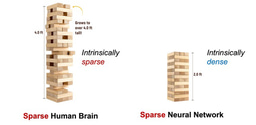Edge computing: Video processing on a self-calibrating analogue memristor array
Published in Electrical & Electronic Engineering

Introduction
Modern computing faces challenges due to the growing data demands created by the Internet of Things (IoT) and artificial intelligence (AI). Traditional methods rely heavily on centralized systems, often resulting in high latency, security concerns, and significant energy consumption. Addressing these issues, Nature Electronics recently showcased a breakthrough in edge-computing technology that decentralizes processing by utilizing analogue memristor-based systems. This innovative approach paves the way for real-time, energy-efficient solutions across various industries.
The Role of Edge Computing
Edge computing shifts processing closer to data sources, reducing reliance on centralized infrastructures. By minimizing the distance data must travel, this technology enhances speed, decreases energy use, and improves data privacy. However, edge devices are resource-constrained, requiring compact and efficient systems capable of handling complex AI tasks without compromising reliability or accuracy.
Analog Memristors: A New Horizon
The memristor-based analogue computing platform presented in the study stands out for its ability to handle intensive computational tasks energy-efficiently. Unlike traditional digital systems, this platform operates directly in the analogue domain, eliminating the need for extensive data conversions. With their ability to store and process information simultaneously, Memristors provide a compact and scalable solution for edge computing. Key innovations include self-calibration mechanisms and real-time training capabilities, setting new benchmarks for reliability and performance.
Application in Real-Time Video Processing
One of the most compelling demonstrations of this platform is its use in real-time video processing. The system effectively separates foreground and background components in videos without requiring pre-training or external hardware assistance. The platform adapts dynamically to changing environments by leveraging a self-supervised learning algorithm, enabling applications such as autonomous navigation, IoT analytics, and security monitoring.
Addressing Challenges
Despite its promise, analogue computing with memristors is not without challenges. Issues such as variability in memristor behaviour and limited endurance have historically hindered widespread adoption. The study's innovation lies in overcoming these barriers through hardware-level enhancements and self-calibrating algorithms. These advancements ensure consistent performance even in resource-limited environments.
Broader Implications
This development marks a significant step towards sustainable and decentralized AI systems. The compact nature of memristor-based platforms makes them ideal for integrating into IoT devices, where space and energy efficiency are critical. Moreover, the system’s ability to process data locally reduces cloud infrastructure dependency, addressing privacy concerns and energy inefficiencies.
Future Directions
While the current platform demonstrates remarkable capabilities, further research is needed to scale this technology for broader applications. Enhancing the endurance of memristor devices and improving compatibility with higher-resolution data are key areas for exploration. Additionally, integrating these systems into large-scale industrial processes could unlock new automation and real-time analytics possibilities.
Conclusion
The analogue memristor-based edge-computing platform represents a paradigm shift in decentralized AI. By addressing the limitations of traditional systems, this technology offers a scalable, energy-efficient, and reliable solution for real-time applications. As research continues, this innovation is poised to play a critical role in shaping the future of computing.
Follow the Topic
-
Nature Electronics

This journal publishes both fundamental and applied research across all areas of electronics, from the study of novel phenomena and devices, to the design, construction and wider application of electronic circuits.





Please sign in or register for FREE
If you are a registered user on Research Communities by Springer Nature, please sign in